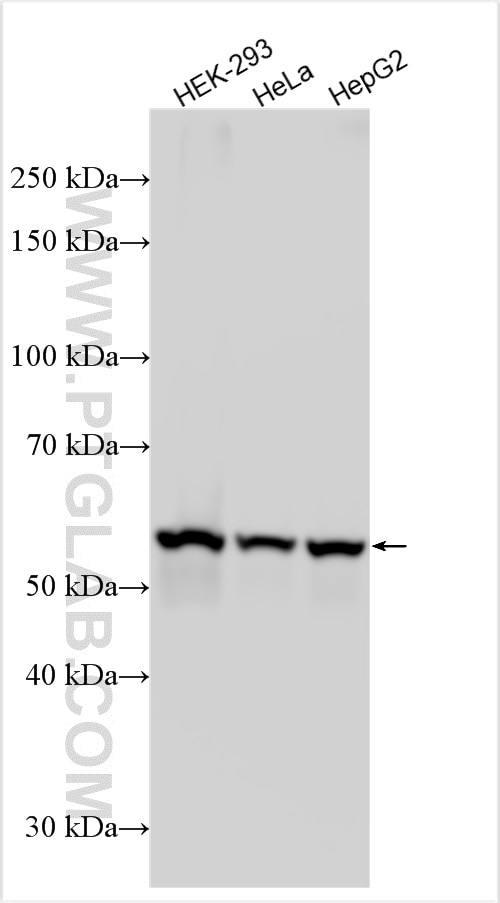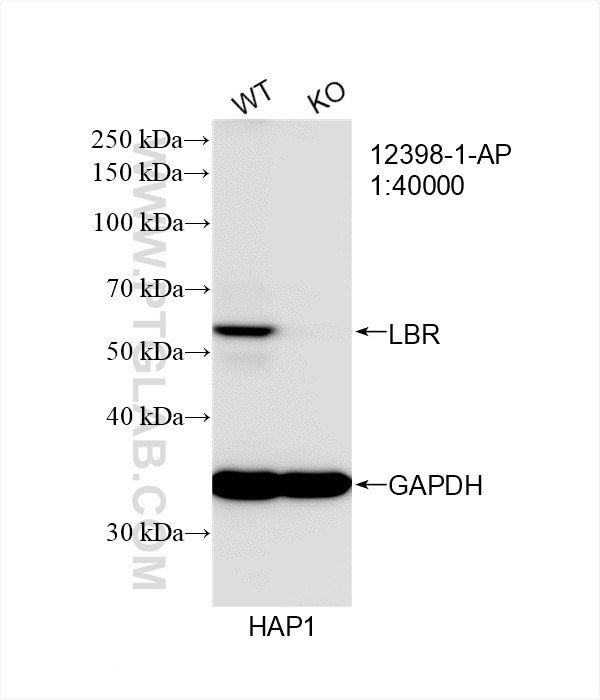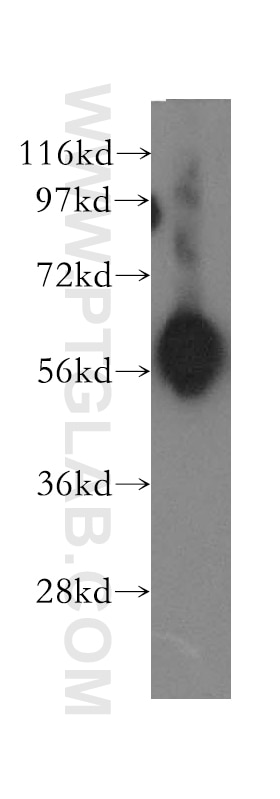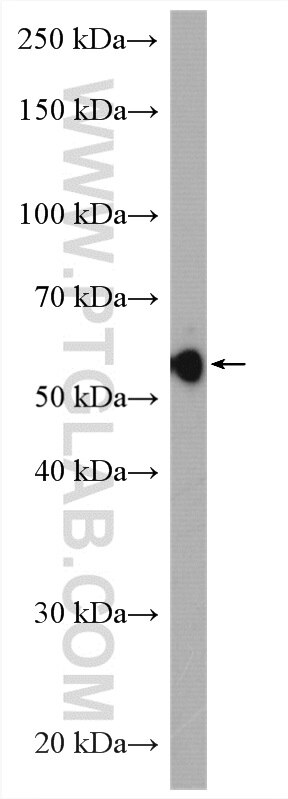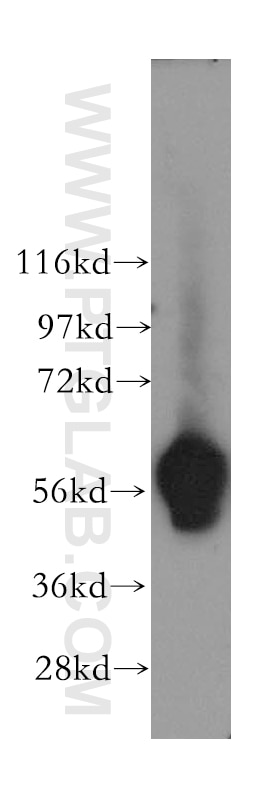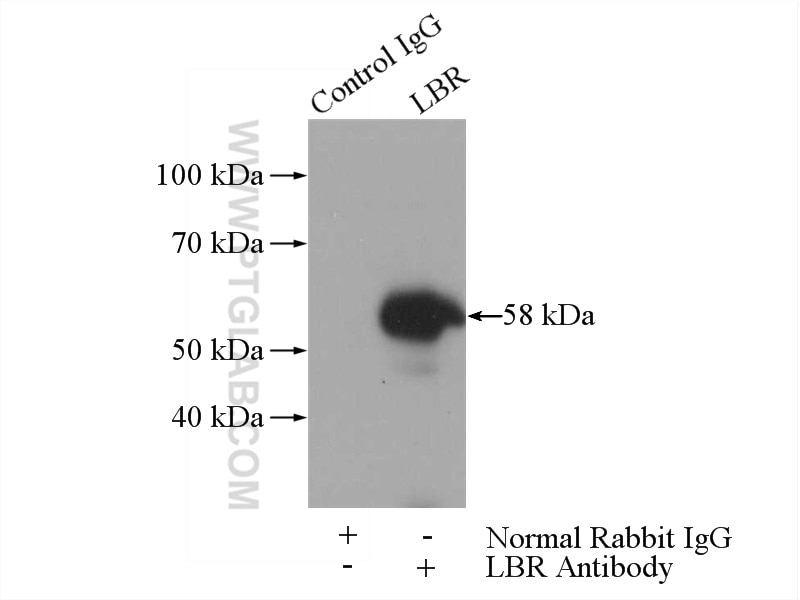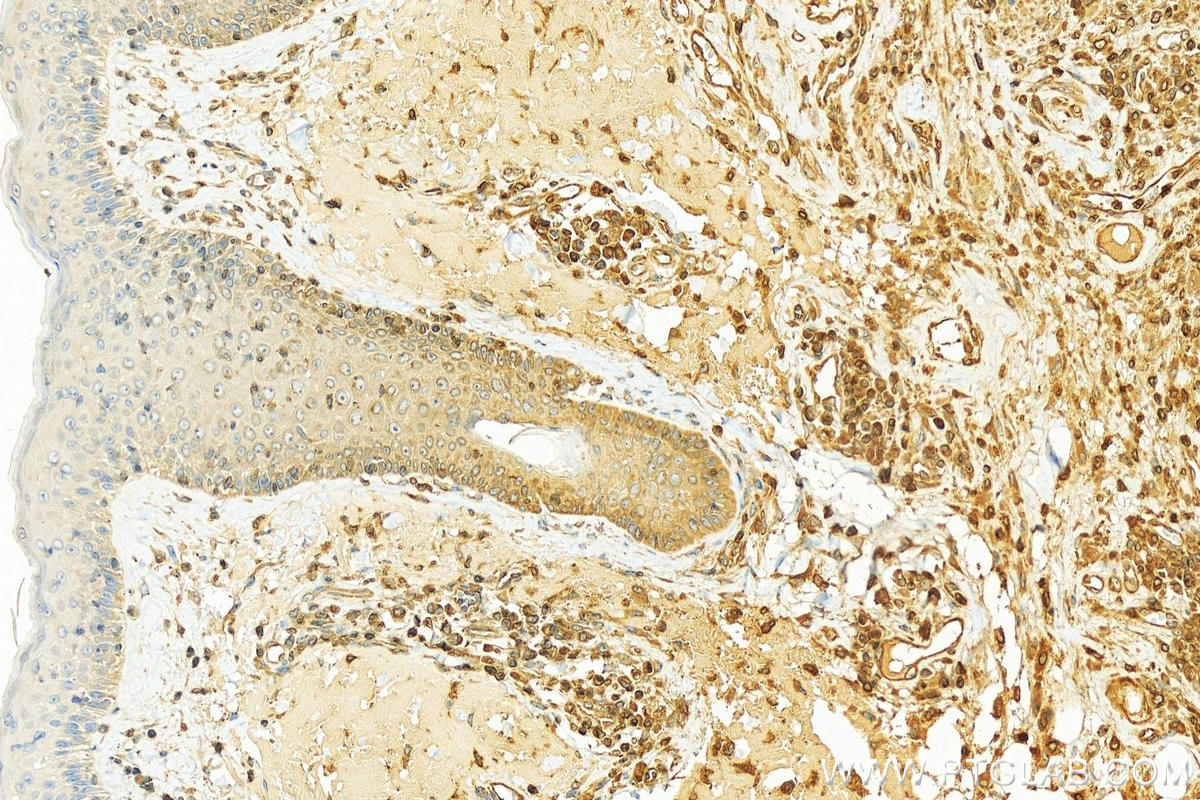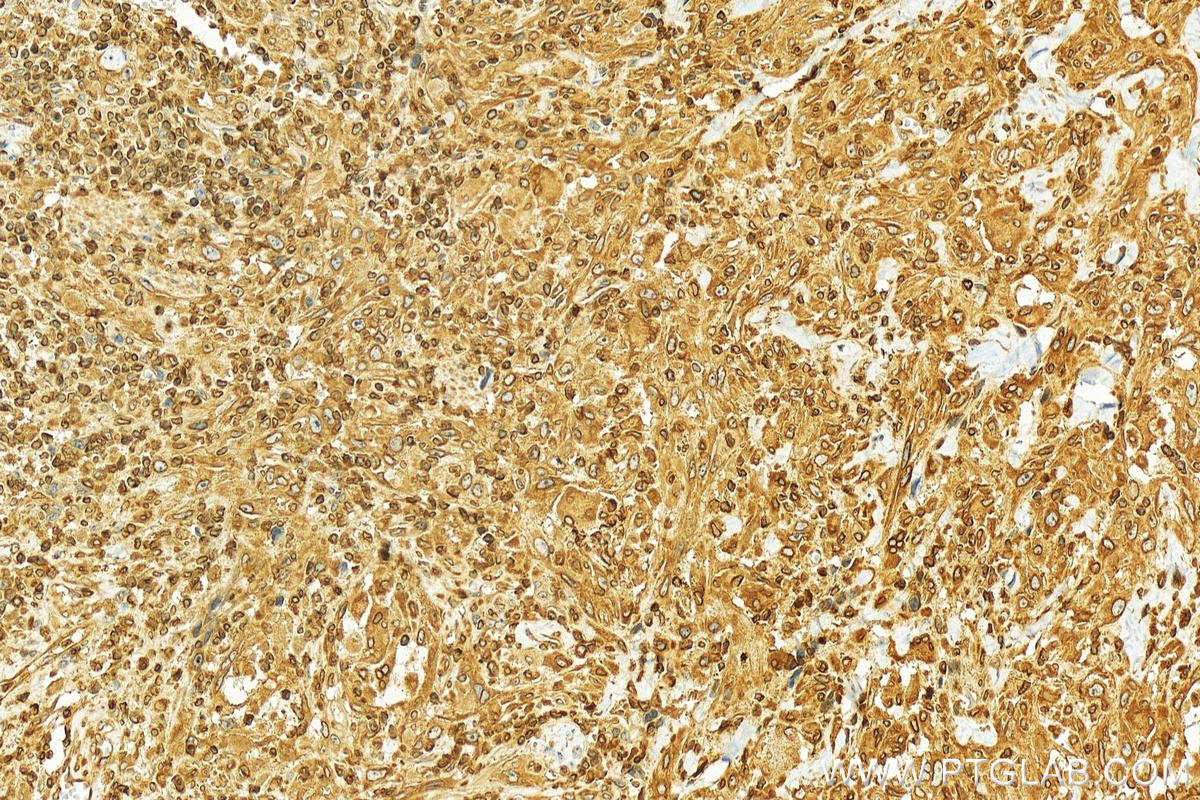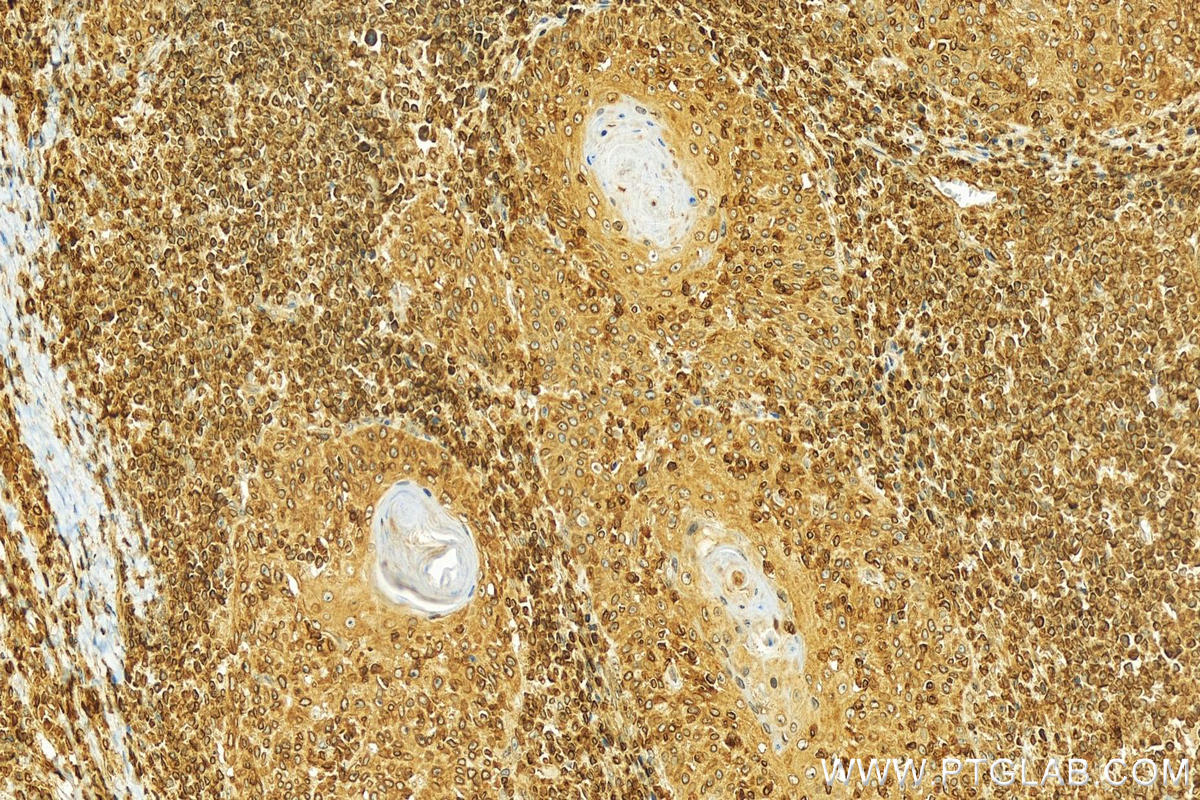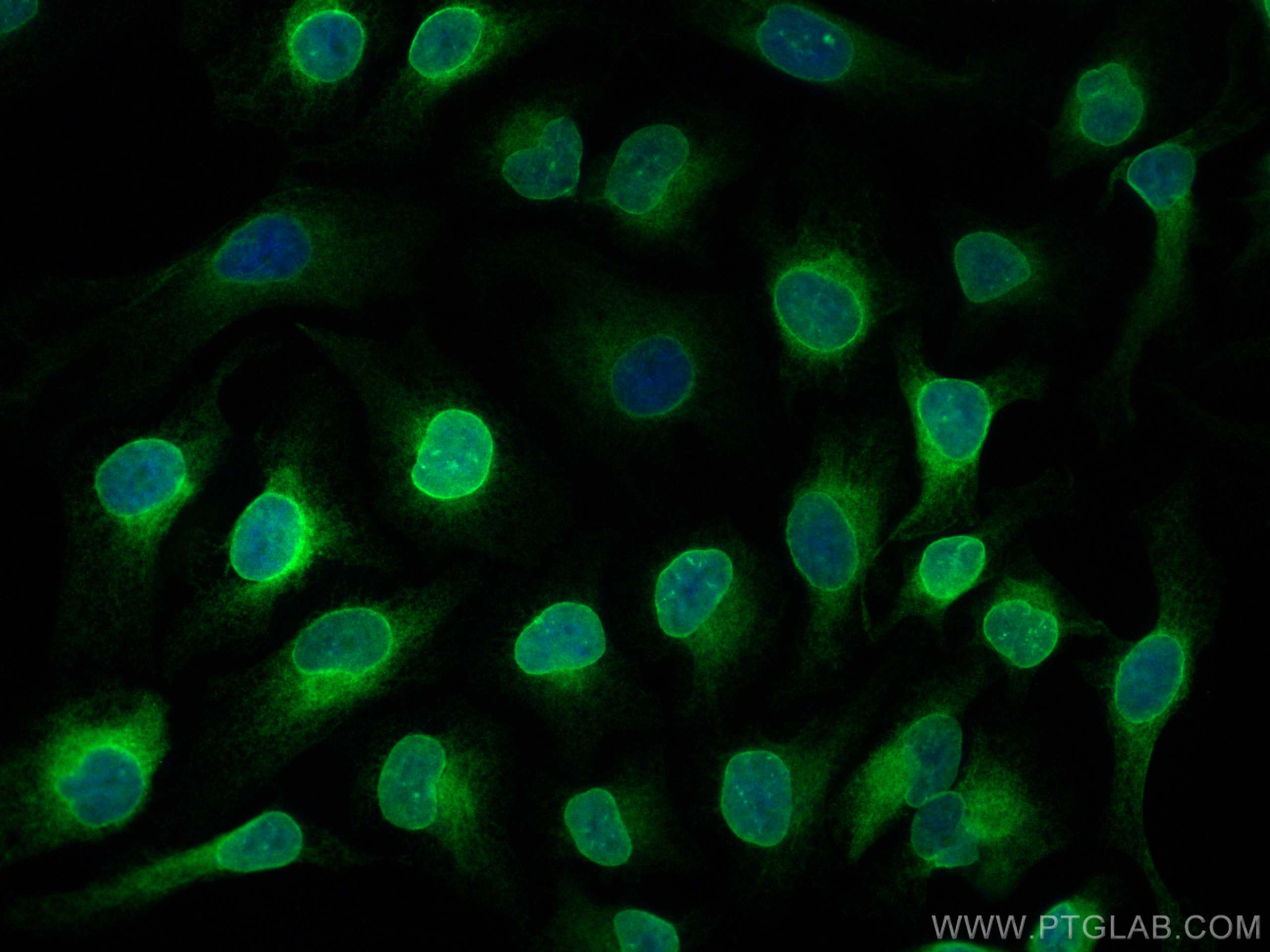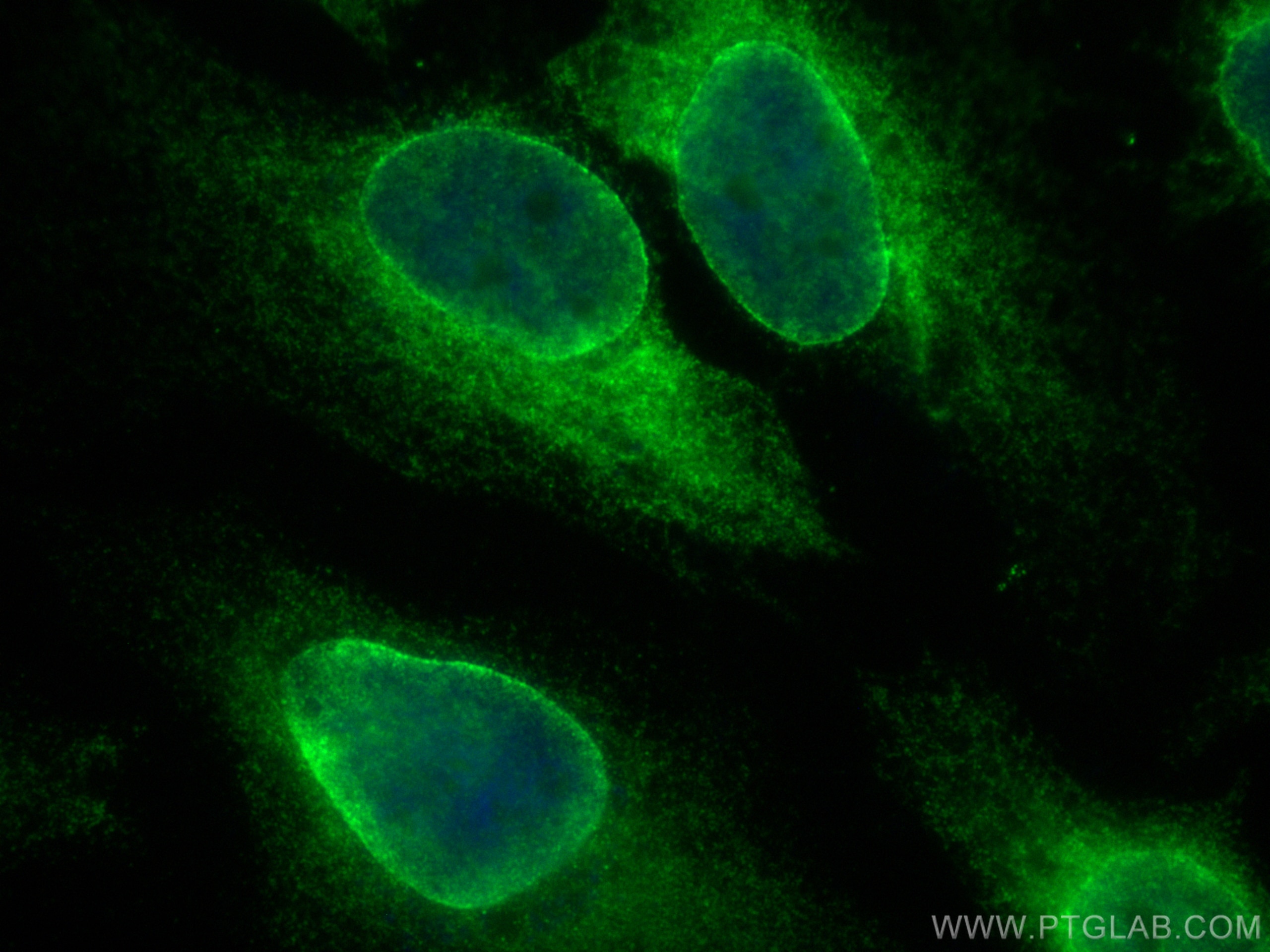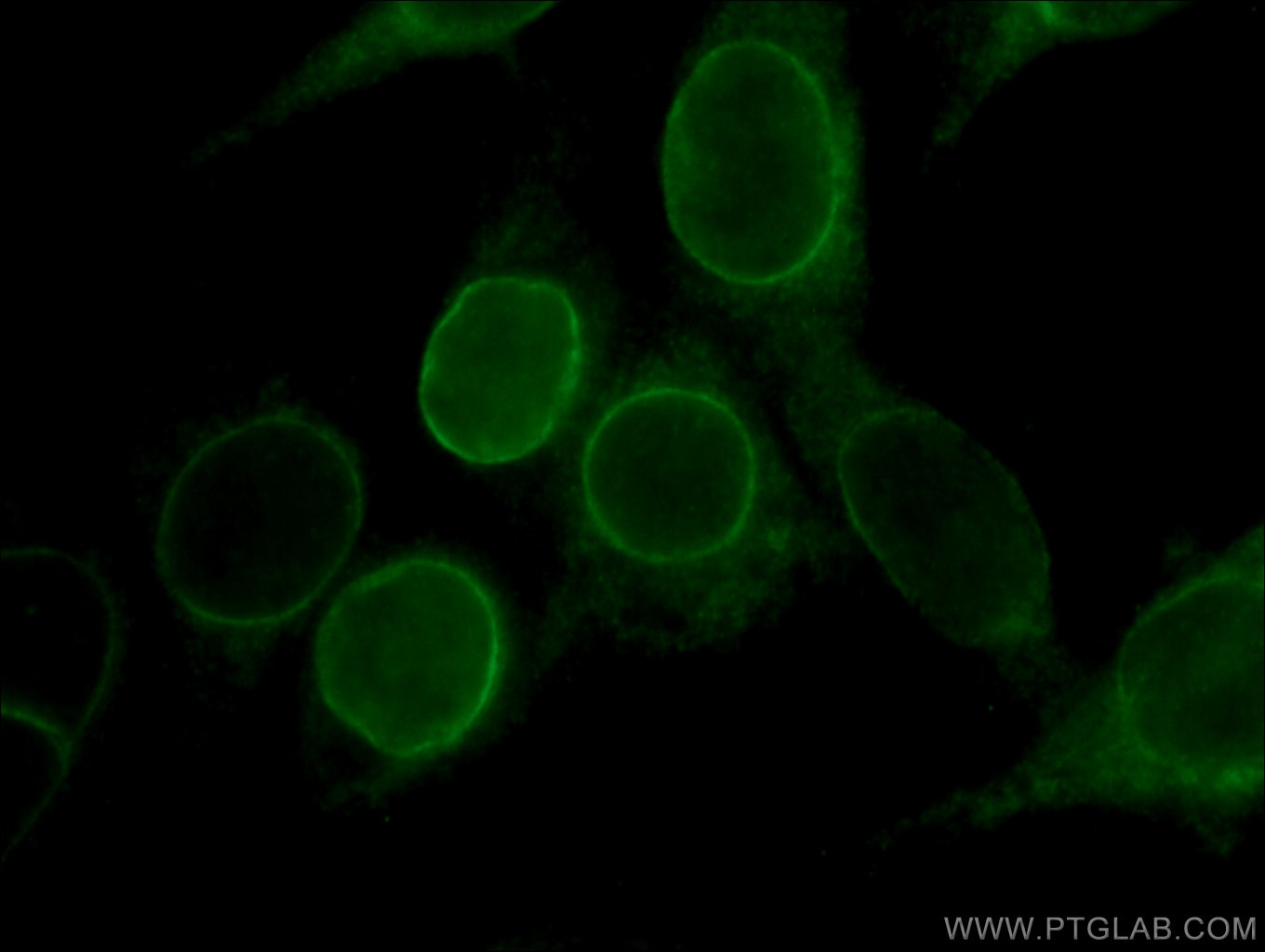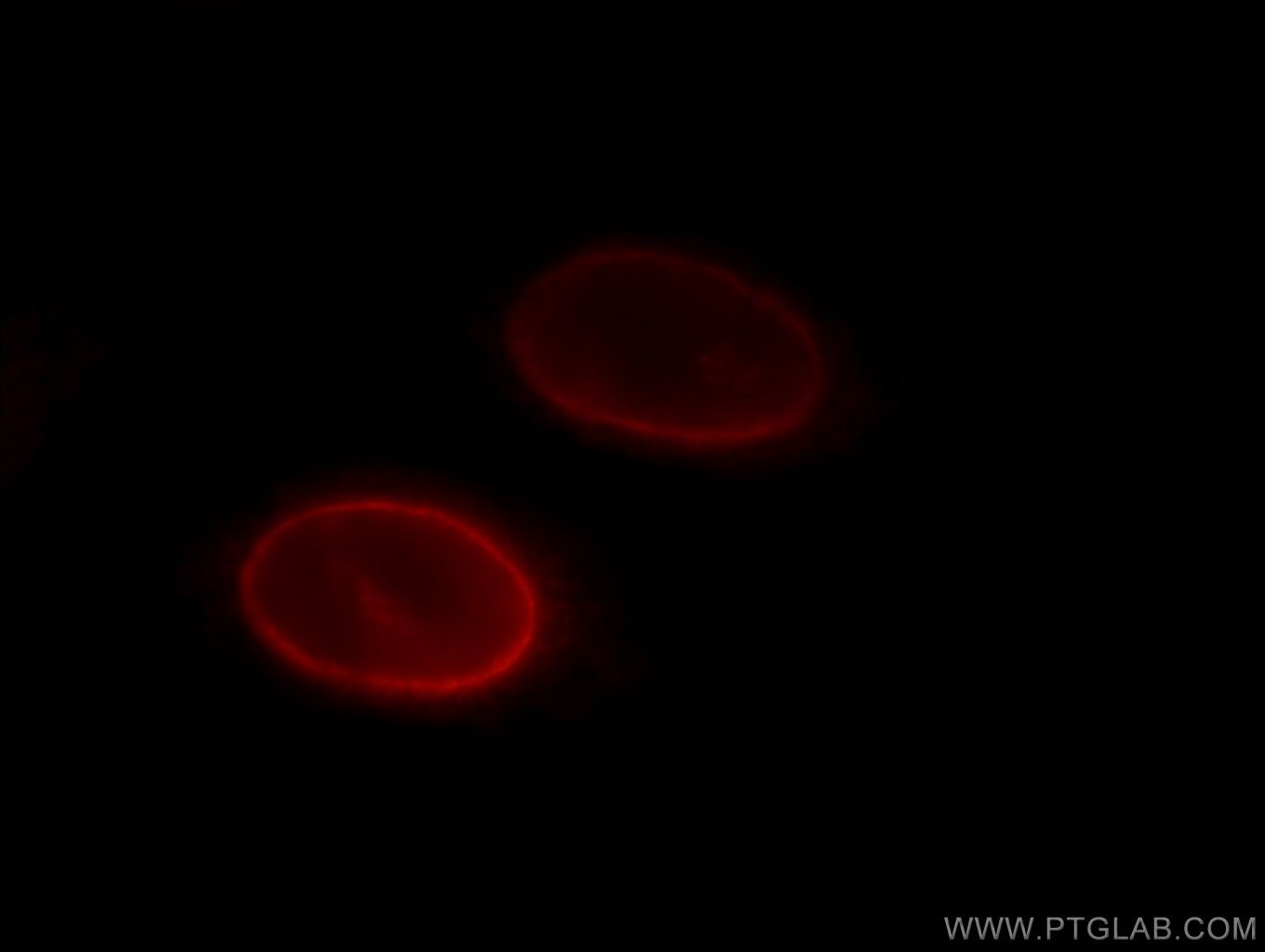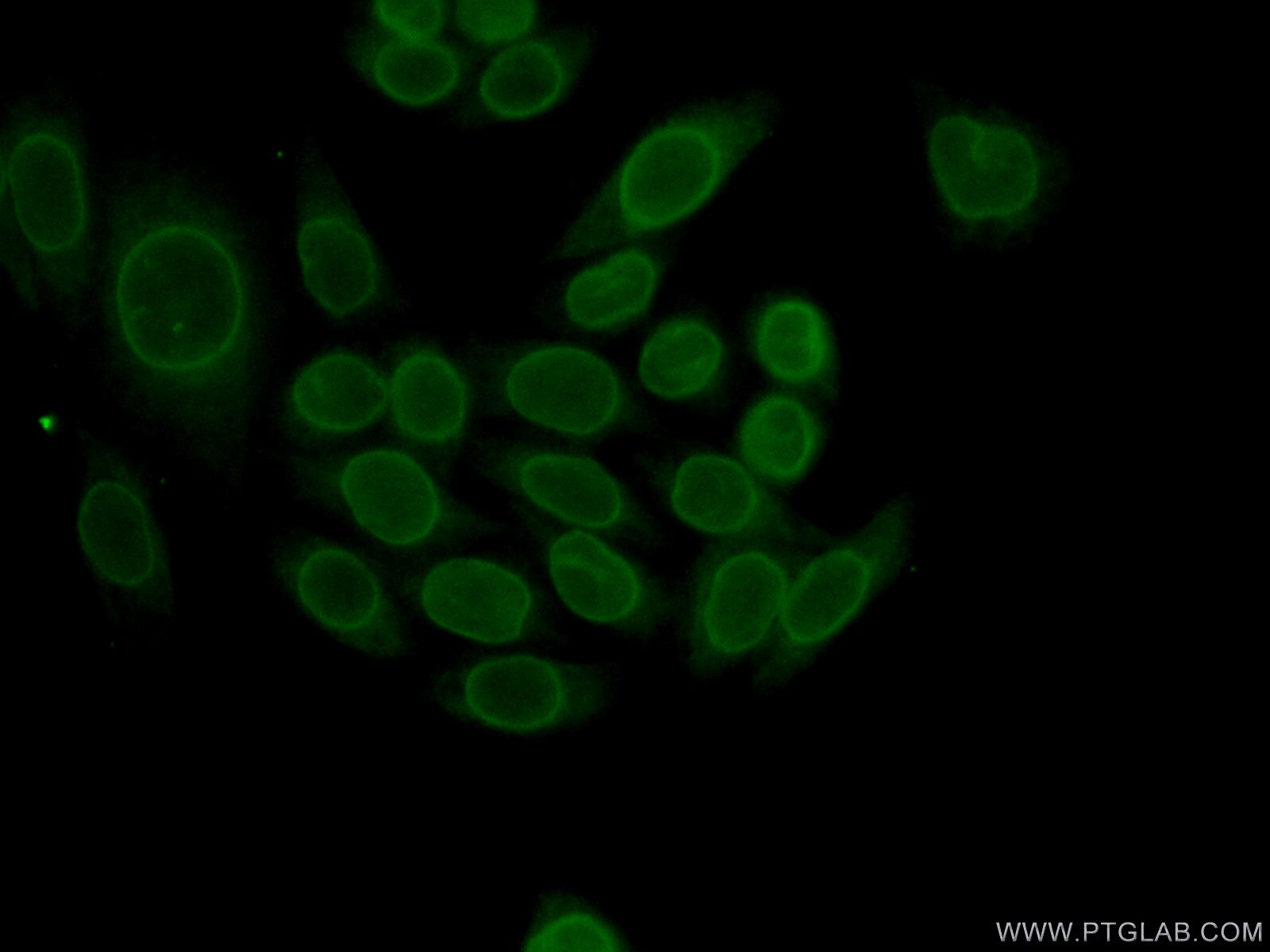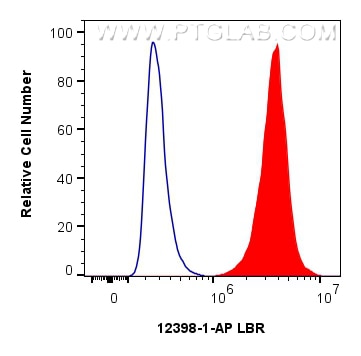- Featured Product
- KD/KO Validated
LBR Polyklonaler Antikörper
LBR Polyklonal Antikörper für WB, IHC, IF/ICC, FC (Intra), IP, ELISA
Wirt / Isotyp
Kaninchen / IgG
Getestete Reaktivität
human, Maus, Ratte
Anwendung
WB, IHC, IF/ICC, FC (Intra), IP, CoIP, ChIP, ELISA
Konjugation
Unkonjugiert
Kat-Nr. : 12398-1-AP
Synonyme
Geprüfte Anwendungen
| Erfolgreiche Detektion in WB | HEK-293-Zellen, A375-Zellen, C2C12-Zellen, HeLa-Zellen, HepG2-Zellen, humanes Hirngewebe |
| Erfolgreiche IP | A375-Zellen |
| Erfolgreiche Detektion in IHC | humanes Hautkrebsgewebe Hinweis: Antigendemaskierung mit TE-Puffer pH 9,0 empfohlen. (*) Wahlweise kann die Antigendemaskierung auch mit Citratpuffer pH 6,0 erfolgen. |
| Erfolgreiche Detektion in IF/ICC | HeLa-Zellen, C6-Zellen, HepG2-Zellen |
| Erfolgreiche Detektion in FC (Intra) | HeLa-Zellen |
Empfohlene Verdünnung
| Anwendung | Verdünnung |
|---|---|
| Western Blot (WB) | WB : 1:5000-1:50000 |
| Immunpräzipitation (IP) | IP : 0.5-4.0 ug for 1.0-3.0 mg of total protein lysate |
| Immunhistochemie (IHC) | IHC : 1:200-1:800 |
| Immunfluoreszenz (IF)/ICC | IF/ICC : 1:300-1:1200 |
| Durchflusszytometrie (FC) (INTRA) | FC (INTRA) : 0.40 ug per 10^6 cells in a 100 µl suspension |
| It is recommended that this reagent should be titrated in each testing system to obtain optimal results. | |
| Sample-dependent, check data in validation data gallery | |
Veröffentlichte Anwendungen
| WB | See 6 publications below |
| IF | See 4 publications below |
| IP | See 1 publications below |
| CoIP | See 1 publications below |
| ChIP | See 1 publications below |
Produktinformation
12398-1-AP bindet in WB, IHC, IF/ICC, FC (Intra), IP, CoIP, ChIP, ELISA LBR und zeigt Reaktivität mit human, Maus, Ratten
| Getestete Reaktivität | human, Maus, Ratte |
| In Publikationen genannte Reaktivität | human, Maus |
| Wirt / Isotyp | Kaninchen / IgG |
| Klonalität | Polyklonal |
| Typ | Antikörper |
| Immunogen | LBR fusion protein Ag3088 |
| Vollständiger Name | lamin B receptor |
| Berechnetes Molekulargewicht | 615 aa, 71 kDa |
| Beobachtetes Molekulargewicht | 58 kDa |
| GenBank-Zugangsnummer | BC020079 |
| Gene symbol | LBR |
| Gene ID (NCBI) | 3930 |
| Konjugation | Unkonjugiert |
| Form | Liquid |
| Reinigungsmethode | Antigen-Affinitätsreinigung |
| Lagerungspuffer | PBS with 0.02% sodium azide and 50% glycerol |
| Lagerungsbedingungen | Bei -20°C lagern. Nach dem Versand ein Jahr lang stabil Aliquotieren ist bei -20oC Lagerung nicht notwendig. 20ul Größen enthalten 0,1% BSA. |
Hintergrundinformationen
Lamin-B receptor (LBR) is an integral membrane protein of the inner nuclear membrane that contains a hydrophilic N-terminal end protruding into the nucleoplasm, eight hydrophobic segments that span the membrane and a short, nucleoplasmic C-terminal tail (PMID: 28858257). LBR anchors the lamina and the heterochromatin to the inner nuclear membrane (PMID: 10828963; 28858257). It is also essential for cholesterol synthesis (PMID: 27336722). Mutations of the LBR gene have been associated with autosomal recessive HEM/Greenberg skeletal dysplasia and Pelger-Huët anomaly and Greenberg skeletal dysplasia (PMID: 12618959; 12490533). The calculated molecular mass of LBR is 71 kDa, which is larger than the apparent molecular mass of 58 kDa, probably due to the aberrant migration of membrane proteins subjected to SDS-PAGE (PMID: 2847165; 2170422).
Protokolle
| PRODUKTSPEZIFISCHE PROTOKOLLE | |
|---|---|
| WB protocol for LBR antibody 12398-1-AP | Protokoll herunterladen |
| IHC protocol for LBR antibody 12398-1-AP | Protokoll herunterladenl |
| IF protocol for LBR antibody 12398-1-AP | Protokoll herunterladen |
| IP protocol for LBR antibody 12398-1-AP | Protokoll herunterladen |
| STANDARD-PROTOKOLLE | |
|---|---|
| Klicken Sie hier, um unsere Standardprotokolle anzuzeigen |
Publikationen
| Species | Application | Title |
|---|---|---|
Mol Cell Interaction of tau with HNRNPA2B1 and N6-methyladenosine RNA mediates the progression of tauopathy. | ||
Nat Commun PRC1 collaborates with SMCHD1 to fold the X-chromosome and spread Xist RNA between chromosome compartments. | ||
PLoS Genet RCC1L (WBSCR16) isoforms coordinate mitochondrial ribosome assembly through their interaction with GTPases. | ||
J Cell Sci Emery-Dreifuss muscular dystrophy mutations impair TRC40-mediated targeting of emerin to the inner nuclear membrane. | ||
J Cell Mol Med Novel long non-coding RNA CYB561-5 promotes aerobic glycolysis and tumorigenesis by interacting with basigin in non-small cell lung cancer. | ||
Mol Cell Biol Interactome analysis reveals a novel role for RAD6 in the regulation of proteasome activity and localization in response to DNA damage. |
